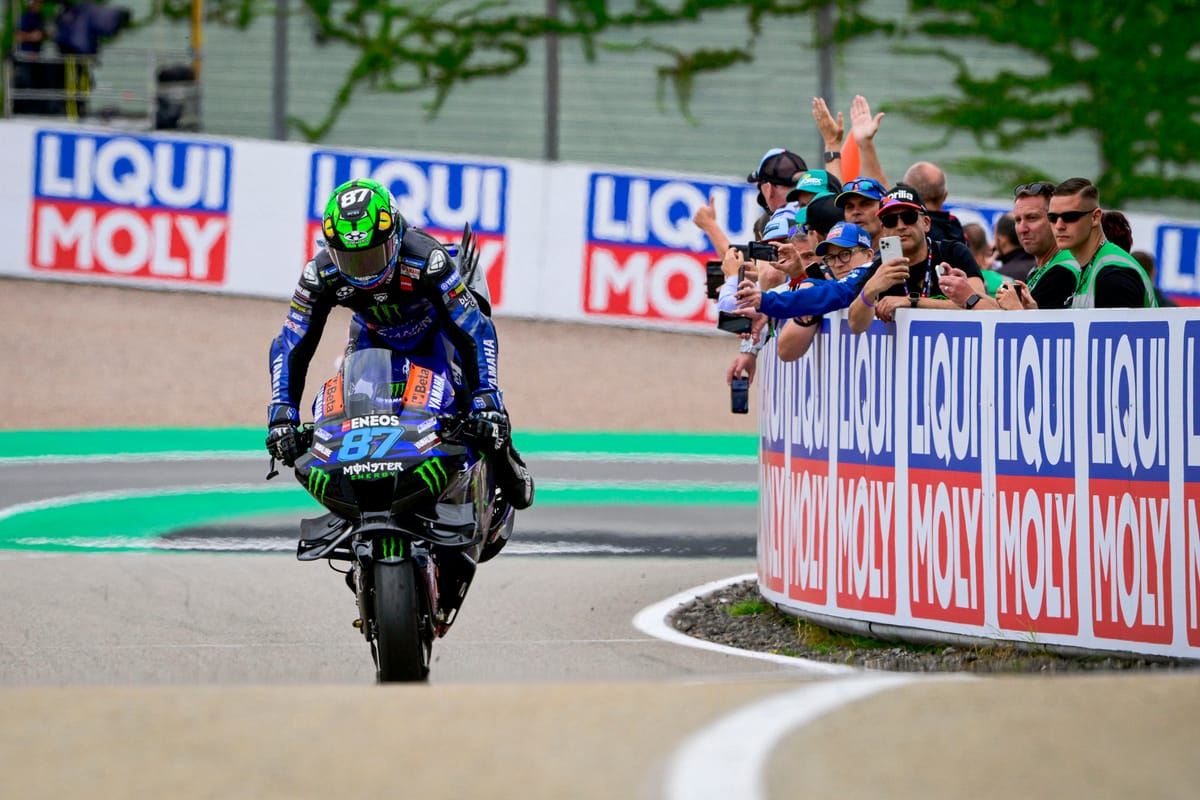“If I don’t finish last, I think it’s a victory!”
The ‘victory’ for Remy Gardner was one inherited post-race in the end, courtesy of a tyre pressure penalty for Honda test rider Stefan Bradl. The headline numbers were otherwise somewhat unkind – 50 seconds off the win, 33 seconds off team-mate Fabio Quartararo, equating to over a second per lap, which is a lot at a tiny MotoGP track like the Sachsenring.
But that would be dishonest framing. This MotoGP is no longer the MotoGP that let Troy Bayliss show up and win, nor even the MotoGP that allowed Jonathan Rea to take over Casey Stoner’s ride and finish eighth and seventh.
You only need to look at the progression of results for someone like ever-present Ducati wildcard Michele Pirro over the years to see how much more specialist and difficult things have become to those coming in from the cold.
And Gardner, of course, was coming in completely from the cold. He got a call from Yamaha the Sunday before when motocrossing with fellow intermediate-class champion Tito Rabat.
No prior testing, no knowledge of bikes from the same lineage. You only need to look at Franco Morbidelli’s season at the start compared to now to see what a difference it makes.
But also, it wasn’t really more than a second a lap, not on the balance of a full weekend. A race in which Gardner cooked his rear tyre due to inexperience and ran nearly two seconds off a lap by the end didn’t reflect the true picture of the weekend.
Instead, taken as a whole, it suggested that a satellite World Superbike rider can be a genuinely valuable asset for Yamaha’s MotoGP programme, too – even if probably not quite to the extent of impacting its full-time rider plans.
The rewiring
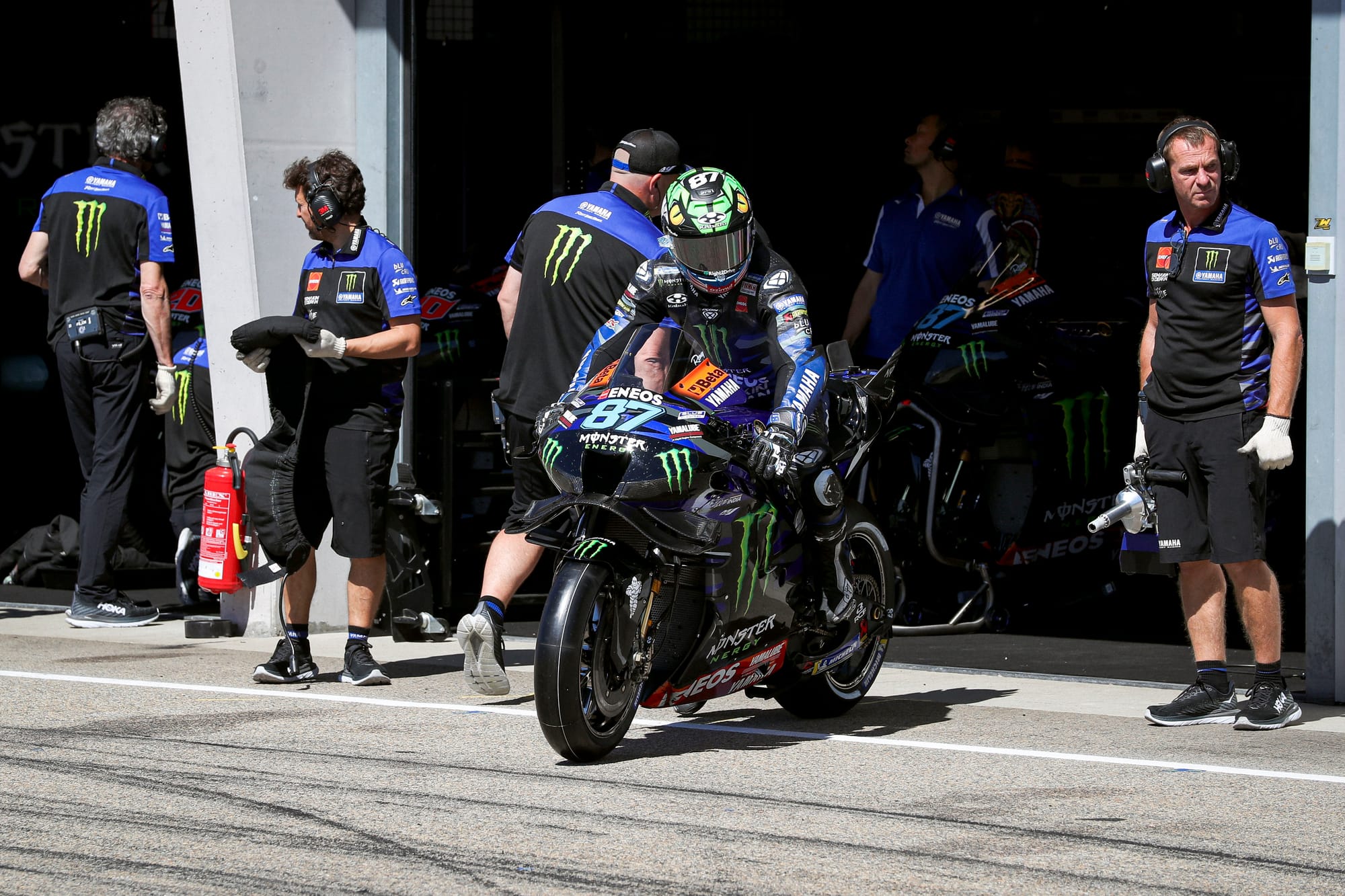
After his unceremonious exit from KTM’s MotoGP programme, Gardner pivoted to World Superbikes – meaning a switch to production machinery and Pirelli rubber and having to rewire his brain accordingly.
It is clearly a bitterly complicated process and one that can be traced in the fact Gardner has been on a clear upward trajectory in his year and a half at the GRT Yamaha team so far, with which he targets a top-five in this year’s championship.
Then, suddenly, he had to adjust back to the Michelins, except on an unfamiliar bike.
“FP1 I was still riding it like with the Pirelli – lots of lean angle, all the way to the kerb, and the guys [here] are picking it up and going for drive. I think with the Yamaha though it’s a little bit more like that,” says Gardner. “But I did a bit of a readjustment for FP2 and actually I felt half-competitive, not too bad honestly. Got in front of the Hondas, which was nice.”
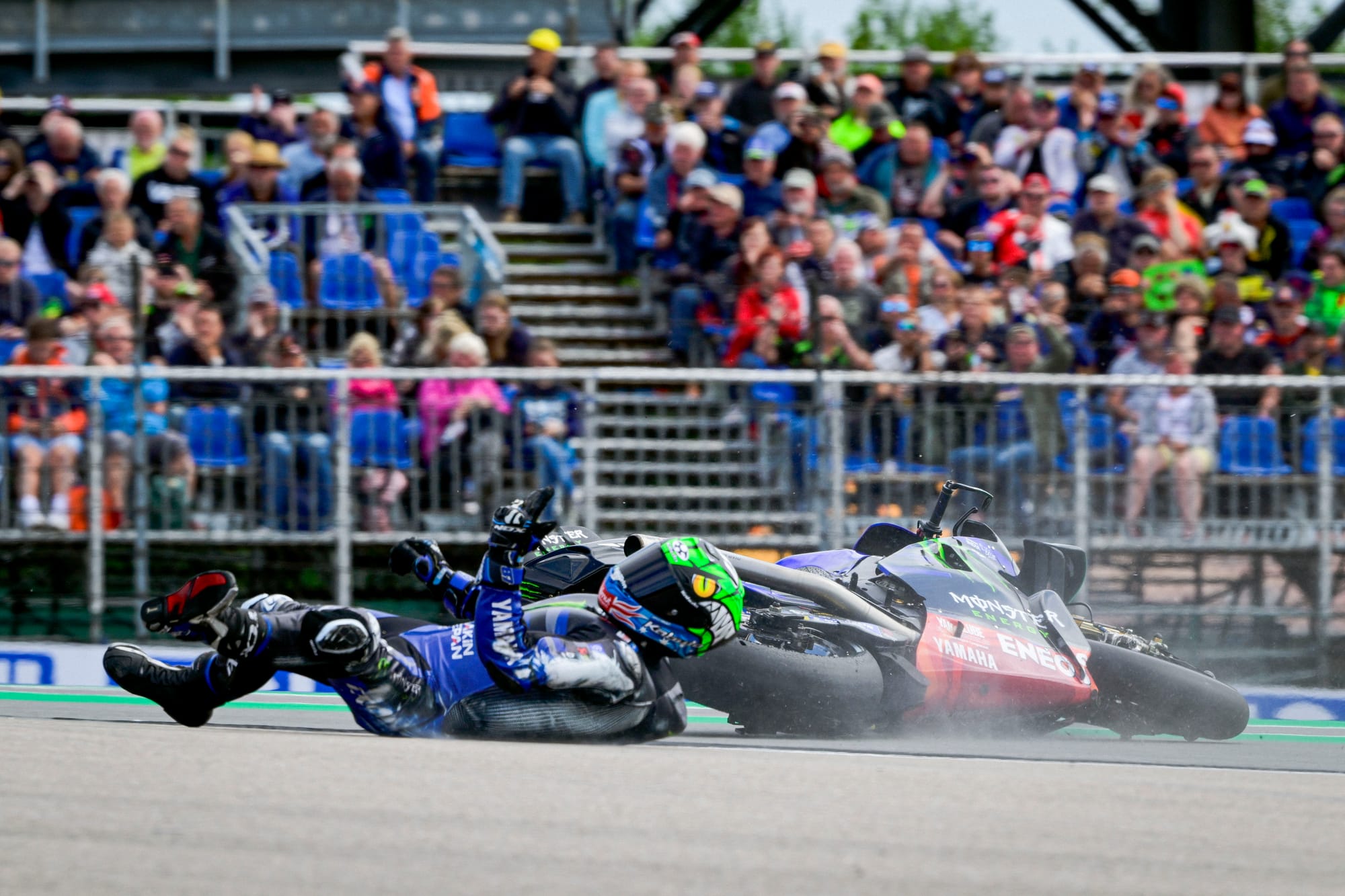
He scuffed it a little bit by crashing at the very end of Friday, leaving himself with bloodied fingers for the rest of the weekend, but ending the day a second off Quartararo – and looking closer outside of time attack mode – legitimately impressed.
That would end up more or less as close as Gardner got – he was again a second off in qualifying, but again should’ve been closer had he put a lap together on the second tyre. “For me, Remy is doing quite a good job for the first race that he’s doing,” said Quartararo.
The Yamaha
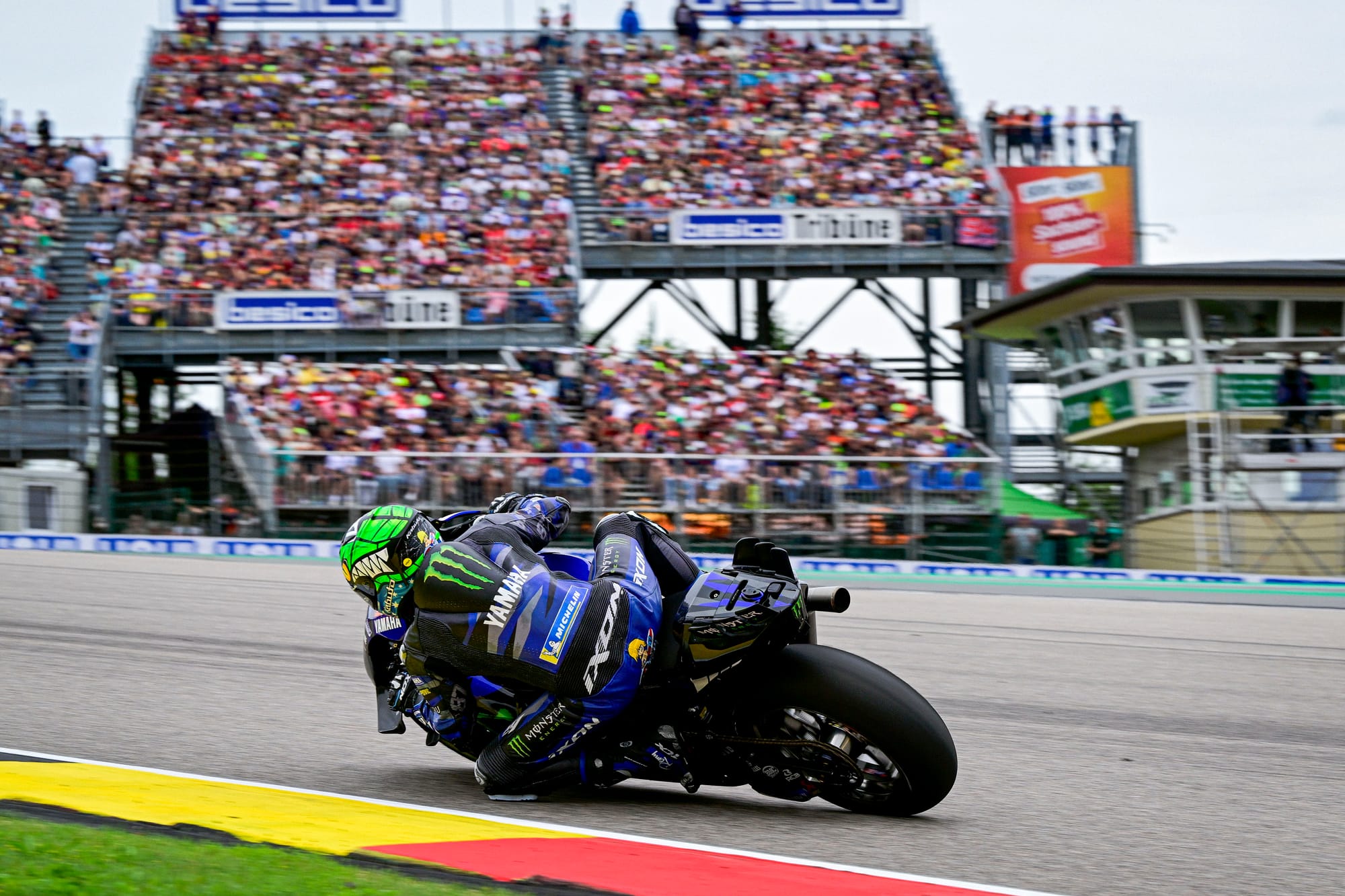
New riders getting on the Yamaha and feeling comfortable – and looking comfortable on the timing screens – would’ve been nothing notable a decade or even five years ago. But to hear all the riders who have handled the more recent versions of the M1, the compliant and user-friendly nature of the bike is now no more than a past stereotype.
Gardner, too, seemed to fall along those lines in the end. He gelled with its mechanical side quite well to begin with, but soon caught on to the engine’s aggressive character.
“The Yamaha has, I guess, had this fame of always being a really smooth and easy bike to ride. I found it a little bit aggressive, to be honest,’ he says.
“Maybe it could’ve been just engine package or something but I did find it a little bit more aggressive than I expected. It’s quite difficult to control slides, control on the gas.
“I had quite a few moments actually, at the end of the [main] race, and even in the sprint, a few highside moments. But luckily I was quick as a cat, saved it.
“But yeah, I expected it to be a bit more smooth. The actual engine, there’s not very much vibration and stuff coming from it, it’s nice but it’s just… a bit too stroke-y.”
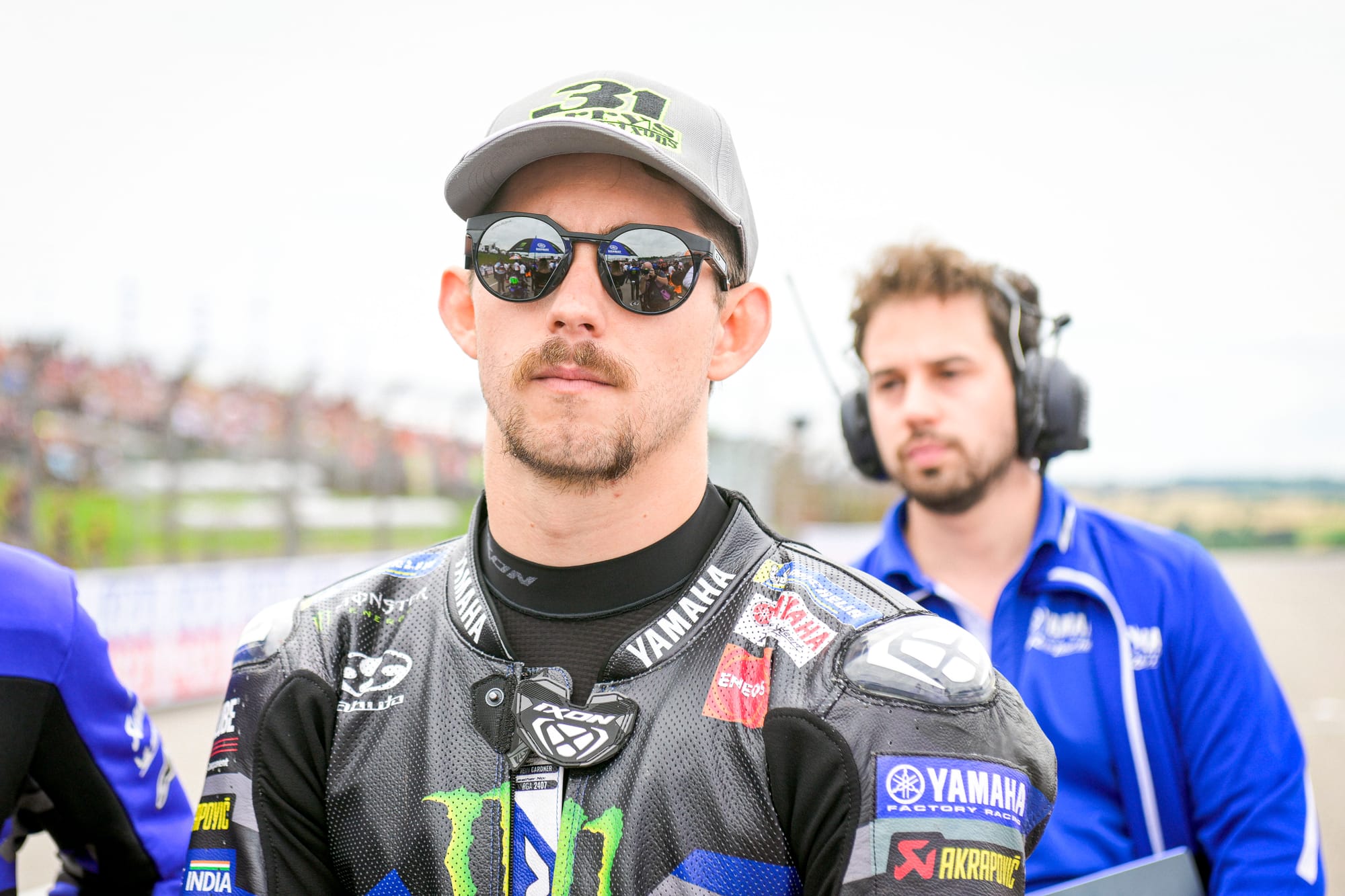
This matches feedback from his peers, as did most of Gardner’s observations overall. While his suggestion that the bike was “really good on brakes” would probably surprise Quartararo – who spent the German Grand Prix weekend emphasising how the M1 was struggling in every area, with no real trump cards to lean on – Gardner did zero in fast on a lack of corner exit performance.
“We’re missing just to get that 20%, finish off the corner and keep a tight line to drive.
“On edge. Edge and grip. We’re missing some rear grip. Just the other boys can finish off the corner with the gas, and they can keep a bit of tyre line, pick it up and drive. Whereas, you know, touch the gas here and it’s kind of always a bit sliding, you’re kind of always looking to pick it up a bit earlier, trying to find the grip.
“It’s like a bit of a dance at the moment. It’s not finishing off corners and picking up. That’s just my feeling – obviously don’t take my word for it.”
Quartararo complained of the same, the slides through the consecutive left-handers in the middle part of the track and the lack grip overall, but said: “The more laps he [Gardner] does, the more he will see that this [a lack of grip] is only a small part of our weaknesses.”
The racing
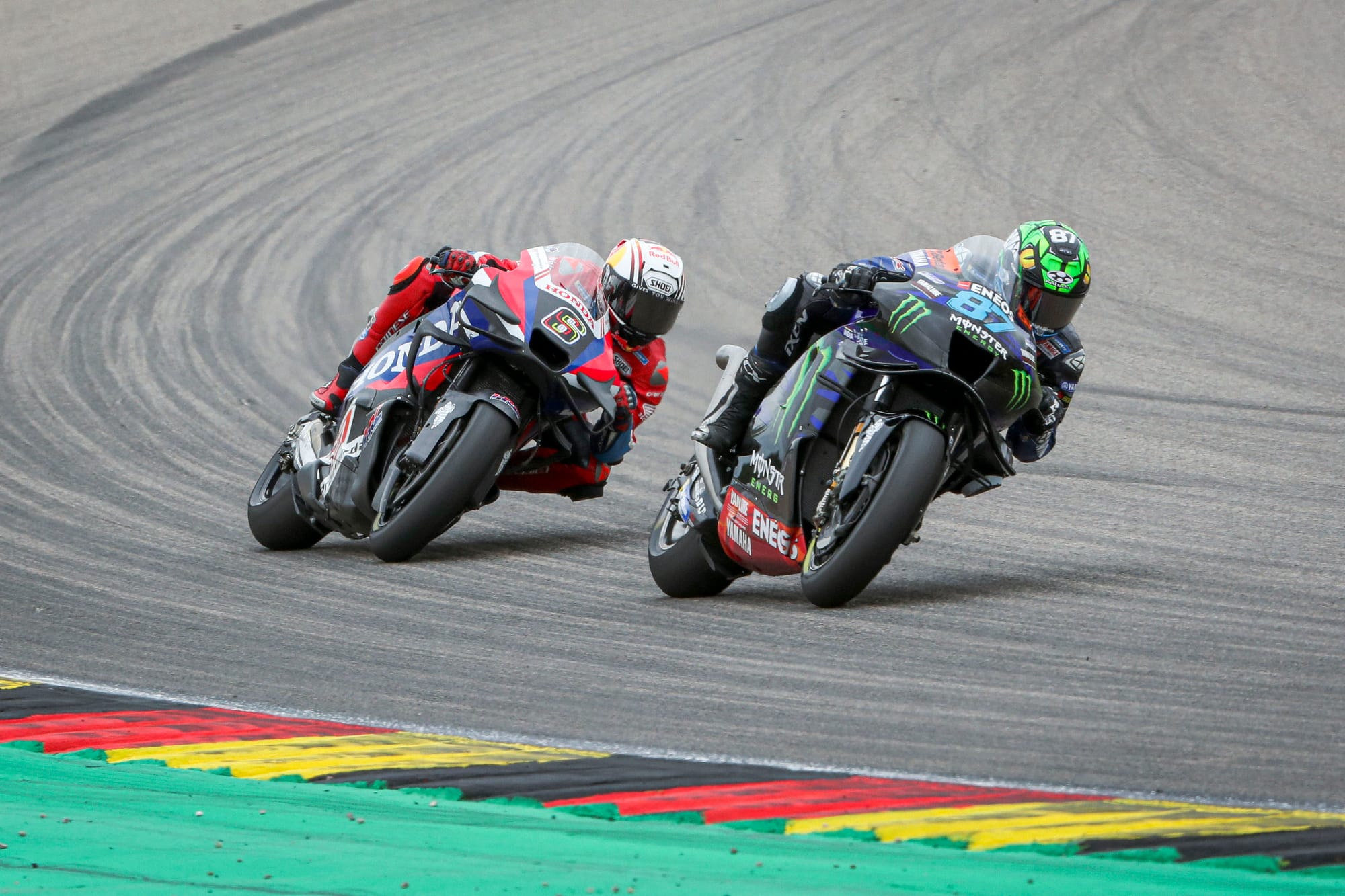
For all of Quartararo’s obvious irritation with the M1’s performance at the Sachsenring, he did haul it to the edge of the top 10 in both races.
This is no surprise – once renowned as a qualifying specialist, Quartararo has actually flipped his performance tendencies in these fallow times for Yamaha. He has been vulnerable in the last year and a bit to losing a qualifying head-to-head here or there to Franco Morbidelli or Alex Rins, but as long as conditions are normal and arm pump is staved off, he has been reliably ahead of the two in race trim.
It’s not surprising in the least he proved a tough benchmark for Gardner, who finished 12 seconds behind in the sprint – lamenting a lack of early-race “explosivity”, which may be MotoGP rustiness but may also be a reflection of the M1 struggling to exploit fresh rubber. He was slightly closer to Quartararo at the halfway point of the main race (shortly before his rear tyre proved no longer functional).
He was, in the end, an active participant in the races rather than a bystander, which is all you can ask for from a rider coming in with effectively no preparation.
“He has been very professional and great to work with,” said Yamaha team manager Maio Meregalli. “He was sort of thrown into the deep end and handled the situation really well.”
The future
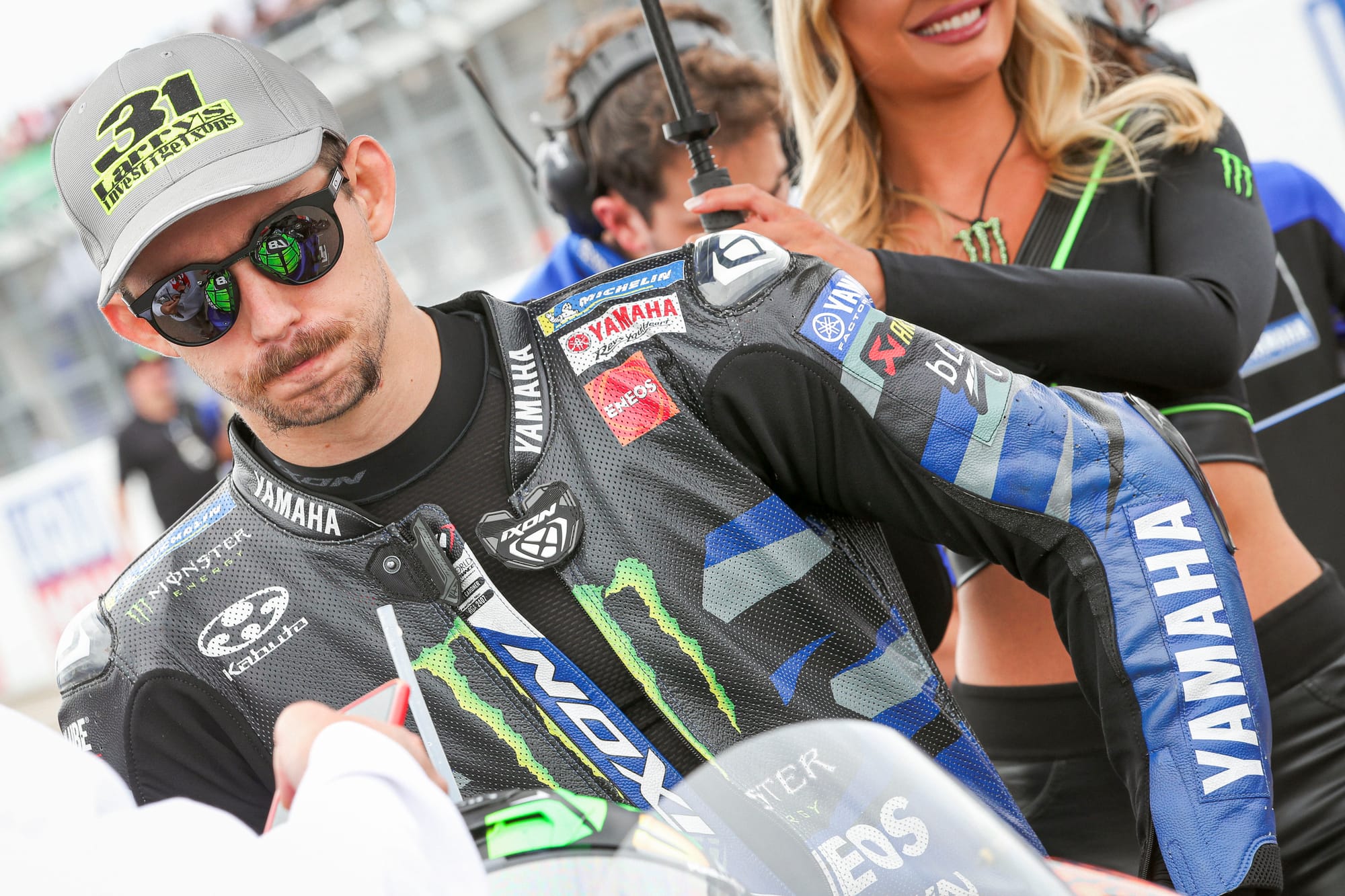
Does any of that mean that Yamaha, which now has two more factory contracts to offer (assuming it re-signs Rins) to riders for its new satellite team Pramac, should turn away from the likes of Miguel Oliveira and Sergio Garcia and bring in Gardner?
Probably not, no. Even Gardner himself probably wouldn’t say that.
At the very least, though, it means that – depending on the willingness/enthusiasm/fitness of tester Cal Crutchlow – Gardner may well now be the definitive first name in the Yamaha phonebook if it needs a MotoGP rider for a weekend.
It’s “nice to think that Yamaha have me that high up in their rider rankings”, he said of his call-up, and the German GP weekend showed it made the right choice. But the circumstances of the call-up shouldn’t be ignored either – Yamaha did not have to replace Rins as per MotoGP regulations, given not enough time had elapsed since Assen to require the bike to be filled.
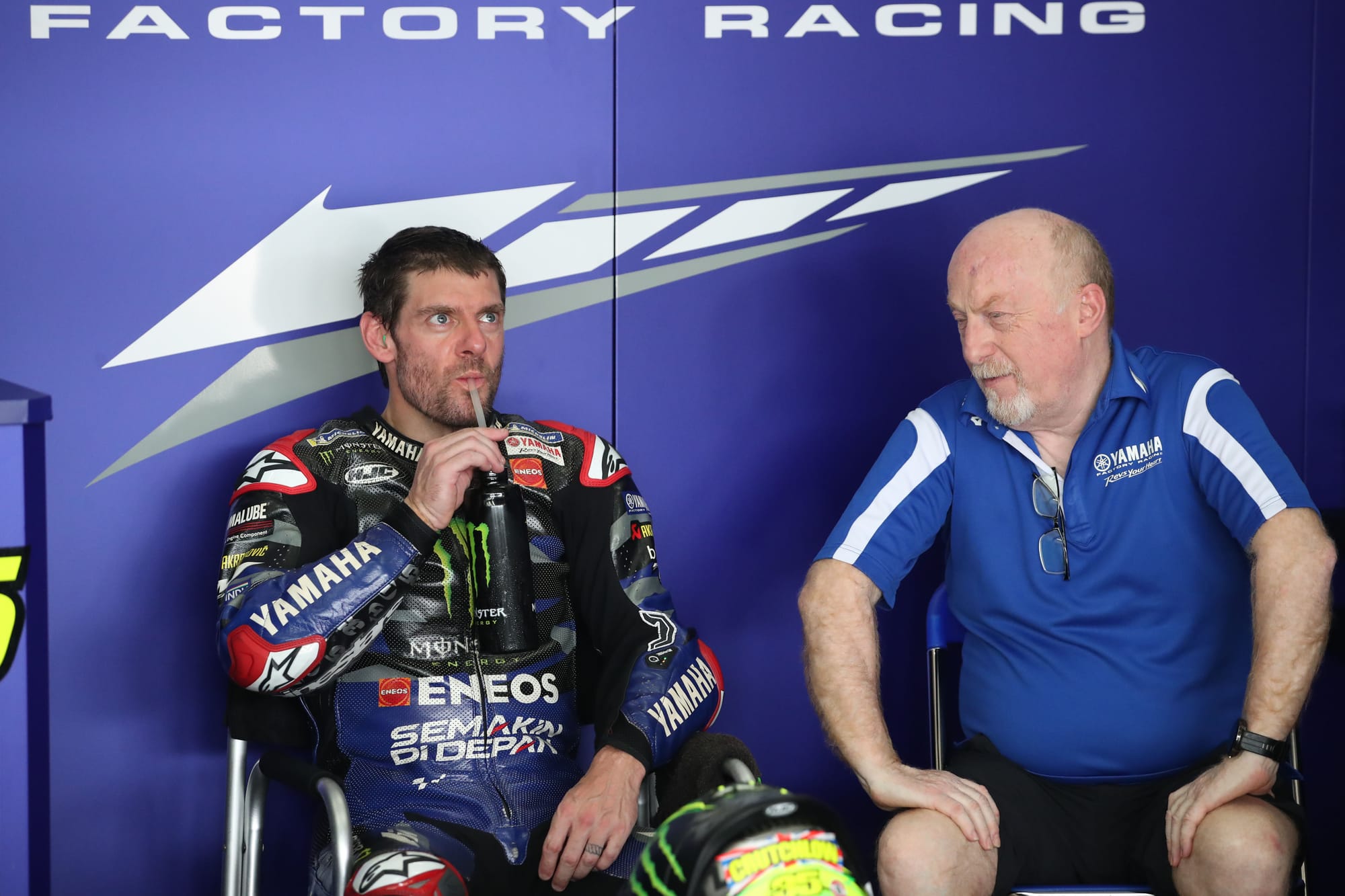
With Crutchlow nursing an injury of his own, it would’ve been the most predictable thing in the world if Quartararo ended up flying the flag solo at the Sachsenring.
Instead, it handed Gardner the keys and even gave him some honest-to-goodness development items.
Only Yamaha will know how good his feedback has been, and only Yamaha will know how valuable it sees Gardner being as a future World Superbike asset – and whether it can afford to risk jeopardising that by splitting his focus.
But with Crutchlow getting no younger, with many MotoGP factories going for two test riders anyway, and with Yamaha being allowed the maximum available amount of testing and in-season development thanks to the current state of its bike, there’s absolutely a path here for Gardner to make a MotoGP-adjacent career happen, two years after his main MotoGP career went up in smoke.

Source link: What should Yamaha do after under-the-radar MotoGP 'victory'?
